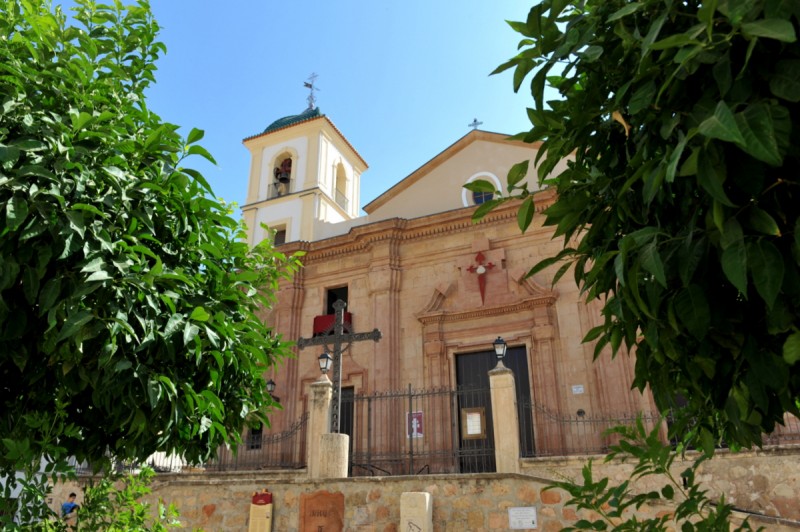
To be listed on the CAMPOSOL TODAY MAP please call +34 968 018 268.

Guidelines for submitting articles to Condado Today
Hello, and thank you for choosing CondadoToday.com to publicise your organisation’s info or event.
Condado Today is a website set up by Murcia Today specifically for residents of the urbanisation in Southwest Murcia, providing news and information on what’s happening in the local area, which is the largest English-speaking expat area in the Region of Murcia.
When submitting text to be included on Condado Today, please abide by the following guidelines so we can upload your article as swiftly as possible:
Send an email to editor@condadotoday.com or contact@murciatoday.com
Attach the information in a Word Document or Google Doc
Include all relevant points, including:
Who is the organisation running the event?
Where is it happening?
When?
How much does it cost?
Is it necessary to book beforehand, or can people just show up on the day?
…but try not to exceed 300 words
Also attach a photo to illustrate your article, no more than 100kb

The Iglesia de Santiago in Lorca
No church in Lorca suffered worse damage in the 2011 earthquakes than the Iglesia de Santiago
The church of Santiago is one of many in Lorca, and although it is not the oldest, the largest or the most important in religious terms it has in many ways become the most emblematic in the city during recent years.
This is because when Lorca was hit by two earthquakes on 11th May 2011 no church suffered more extensive damage than the one dedicated to Santiago, as the 438-ton dome and a large part of the main nave simply collapsed into a heap of rubble. When the building reopened to worshippers in September 2014 the event was hailed as a triumph for the restoration teams involved, the regional and national governments who funded the repairs, and the city as a whole.
But for the Iglesia de Santiago the 21st-century earthquakes were just the latest in a series of reconstructions and other setbacks in a history which dates back to the 18th century…
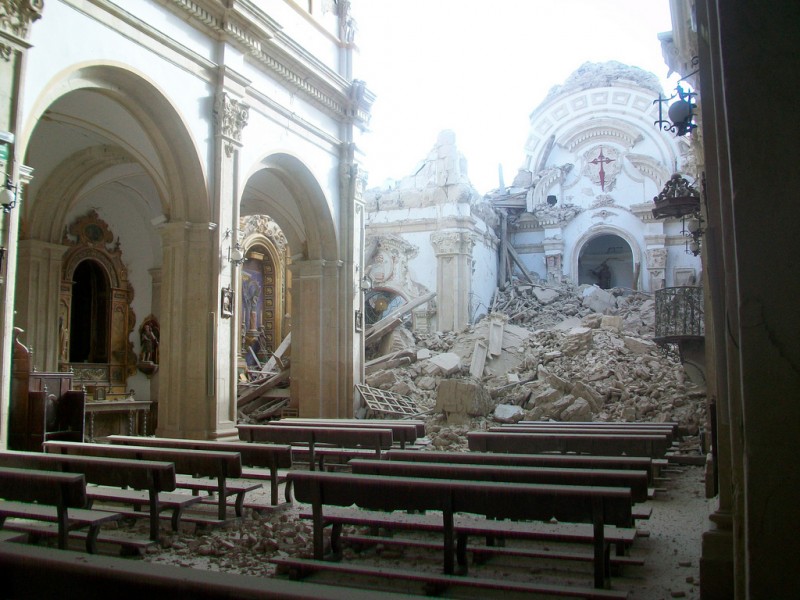
History of the Iglesia de Santiago in Lorca
Baptism records dating back as far as 1575 show that a previous church dedicated to Santiago stood on the same spot in Lorca during the 16th century, and it is known that this structure in turn replaced a small 14th-century chapel which was also dedicated to the patron saint of Spain.
The legend is that this location is chosen because it is the exact point where Santiago (Saint James) preached while visiting Lorca when he came to Spain following the Crucifixion, a visit which would substantiate the claim that the Apostle landed in Cartagena before making his way first to Granada and then to Galicia, where the city of Santiago de Compostela is named after him.
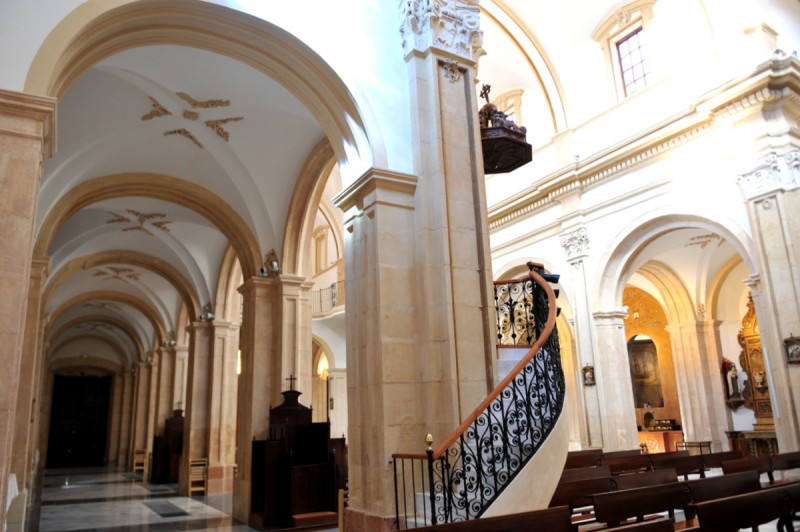
The 16th-century church, though, was also prone to natural disaster, and a series of fires and earthquakes quickly led to its requiring more restoration work than any other in the city. One of the most severe tremors was in 1674, and in 1745 a major rebuilding project began which was to last until 1780.
The new church was officially opened to worshippers in 1781.
On the night of 29th April 1911, though, the building was ravaged by fire, and the main wooden altar screen was destroyed (a replica was not commissioned until after the earthquakes 100 years later), as was the sculpture by Roque López which depicted Santiago on horseback. Four years later the church re-opened, but as was the case in so many places of worship across Spain the Civil War (1936-39) brought yet more destruction, and another fire, this time almost certainly intentionally started, destroyed almost all items inside the building in 1936.
Further reconstruction began after the war in 1940, but it was not until 1994 that the ceiling and dome were restored to their former glory.
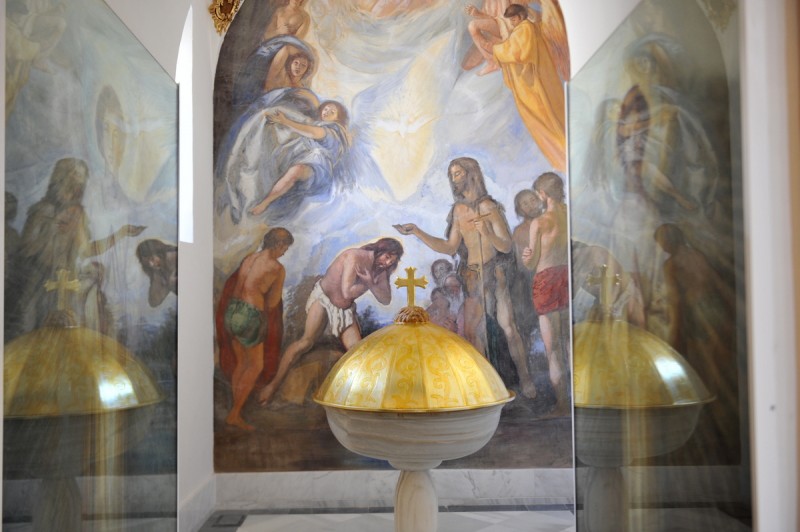
Exterior and interior features
The unfinished three-panel baroque façade features the military insignia of the Order of Santiago, with a sword in the shape of a fleur de lis on the crosspiece of the handle, while the original plans also reveal that the original intention was for there to be two towers rather than one and statues showing the cardinal virtues. The tower which does exist dates from the early 20th century.
The white walls of the interior are relatively sparse in terms of their ornamental decoration in gold, many of them showing floral motifs. In addition, red marble finishes can be seen on some of the pilasters.
The side chapels contain various pieces of important religious artwork, among them the painting by E. Rojo of San Cosme and San Damián, both of whom were early Christian martyrs and physicians. This can be seen in the Capilla del Sacramento, as can a sculpture of the Sagrado Corazón de Jesús by Olot.
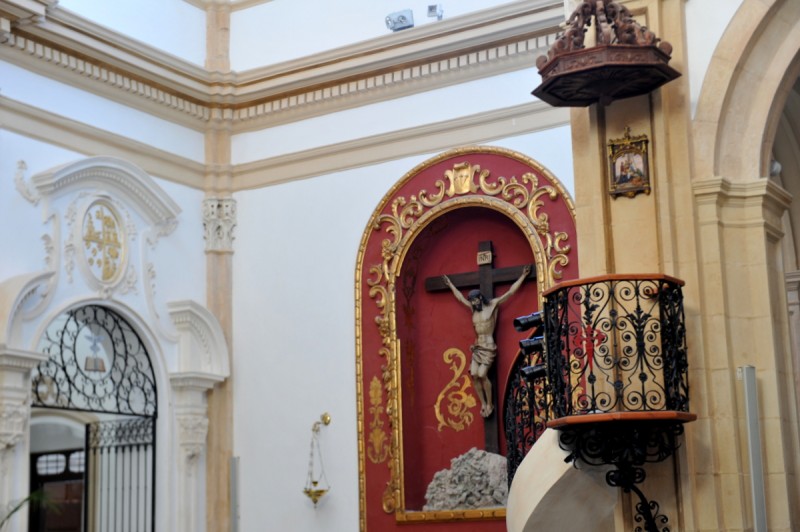
A painted wooden sculpture of Santiago Apóstol by José Gerique Roig stands in the Capilla Mayor, while another figure showing the Inmaculada Concepción by Eduardo Espinosa Cuadros is by the main altar.
Other decoration includes the wall paintings and 18th century baptismal font in the Capilla del Bautismo, where there is also a painting of Jesus in the Garden of Gethsemane by Muñoz Barberán, as well as screens showing San Antonio and an 18th century image of the Virgin Mary and Jesus.
On the other side of the main nave are a chapel devoted to San Antonio Abad, featuring an early 19th century altar screen, another screen showing Santa Rita and a third representing the Coronation of the Virgin Mary.

Mass times at the Iglesia de Santiago in Lorca
Weekdays: 19.00 from October to March, 20.00 from April to September
Saturdays and on the eve of religious holidays: 19.00 from October to March, 20.00 from April to September
Sundays and religious holidays: Morning Mass at 10.00 in July, August and September and at 11.00 the rest of the year, Evening Mass at 19.00 from October to March and at 20.00 from April to September
Image of earthquake damage: Antonio Periago

Location: La iglesia parroquial de Santiago Apóstol
Calle Don Juan II, 1, 30800, Lorca
This is very close to the principal Plaza de España and Tourist Information Office
Click for more information about the Lorca municiplity, including what's on agenda, what to visit and tourist information: LORCA TODAY



